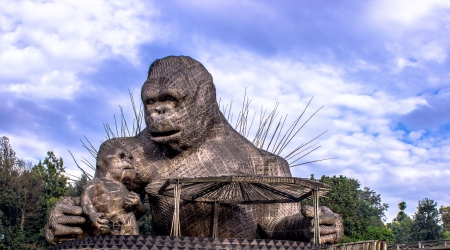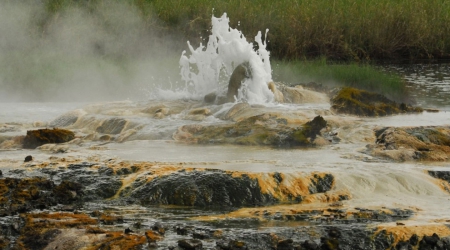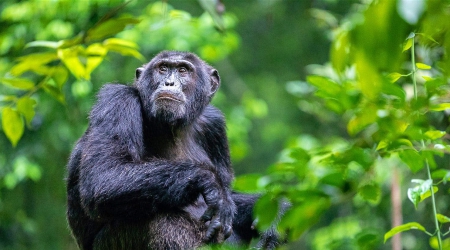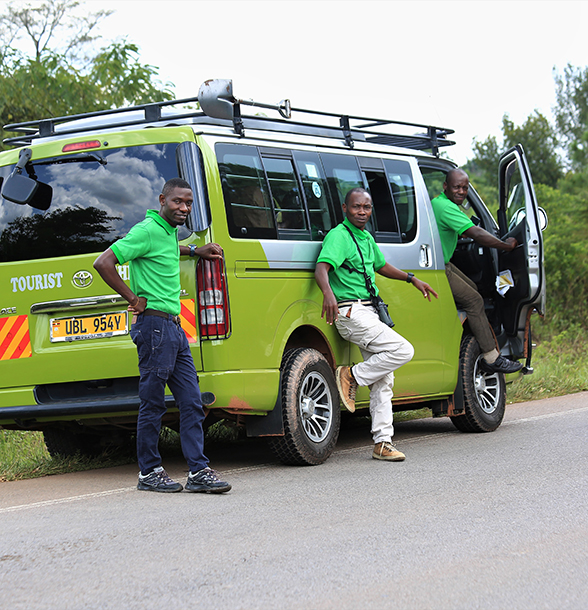Gishwati-Mukura National Park is the least visited park in Rwanda. Gishwati-Mukura is still new and it officially opened for tourism in 2019. It was gazetted in 2015 as one of Rwanda’s National Parks, comprising of Gishwati and Mukura Forest Reserves. The Gishwati Forest lies close to Lake Kivu in Northwestern Rwanda and connects to the lush Mukura Forest. The two rainforests combined make up Gishwati-Mukura N/Park which covers a land area of 34sq.km.
Location
Gishwati-Mukura N/P is found in Northwestern Rwanda and its forests lie along the ridge that divides the Congo and Nile water catchment areas. It is the 3rd natural forest-dominated park in the Land of a Thousand Hills.
Wildlife
Gishwati-Mukura National Park is home to a diversity of primates including olive baboons, 20 chimpanzees, l’hoest monkeys, vervet monkeys, blue monkeys, black and white colobus monkeys. Other mammals that Gishwati-Mukura supports include buffaloes and reptiles.
Birds
A total of 232 species of birds can be identified in Gishwati-Mukura, and they include 15 Albertine rift endemic species. The park’s birds include Rwenzori turacos, archer’s ground robin, Rwenzori batis, long-crested eagle, Rwenzori nightjars, paradise flycatcher, common moorhen, dusky turtle love, grey-throated tit, red-faced woodland warblers, and many others.
Top activities to do while visiting Gishwati-Mukura N/P
Visiting the waterfall
Gishwati-Mukura NP offers not only a magical primate encounter but also lets you explore its charming Kazaneza waterfall. This natural wonder lies in the heart of Gishwati-Mukura N. Park and provides remarkable views. It is a perfect spot for photographers to take their best shot.
Birding
Birding tours are among the key highlights of the Gishwati-Mukura N Park tour. Over 232 bird species reside in this park and during a birding expedition, there is a chance to identify birds such as marsh harriers, long-crested eagle, red-faced woodland warblers, Rwenzori nightjar, archer’s ground robins, handsome francolins, strange weaver birds, martial eagle, mountain yellow warblers, purple-breasted sunbird, regal sunbird, red-throated alethe, woodhoopoe, double collared sunbird, dusky turtle dove, Rwenzori batis, grey-throated tit, and many others.
Chimpanzee tracking
Chimpanzee tracking is the key highlight of the Gishwati-Mukura N.P safari. 20 chimpanzees live in the park and these can be observed while on chimp trek during a special one-hour of close encounter. While tracking chimps, other species of primates can also be spotted and they include blue monkeys, baboons, black and white colobus monkeys.
Before visiting chimps, guests undergo a briefing at Gishwati-Mukura Park headquarters and the park guides are allocated during the same time. A chimpanzee trek allows you to observe how chimpanzees behave, and the park guide will explain to you in detail during the one hour of a face-to-face encounter.
Primate walk
You can also undertake a primate walk/forest walk through a lush Gishwati-Mukura Forest. This is to allow you enjoy the sights of the park’s diverse primates including Mona monkeys, l’hoest monkeys, blue monkeys, olive baboons, black and white colobus monkeys.
During a primate/forest walk, you will also come across a diversity of birds and the park is rich in Albertine rift endemic species such as Rwenzori batis, dusky crimson wing, archer’s ground robin, handsome francolins, long-crested eagle, red-faced woodland warblers, double collared sunbird, paradise flycatchers and many others.
Given its strategic location, it is possible for visitors to also embark on biking/walking tour along the Nile-Nile trail, cultural encounter and more.
When to visit Gishwati-Mukura N/P?
Safaris to Gishwati Mukura National Park can be organized at any time, the park enjoys favorable weather conditions all year round.
The dry season is however the most preferred time/season of the year to consider visiting this park because it is when the trails/ground is dry making it easy to track chimpanzees or primates. Dry months in Gishwati-Mukura occur from June to August and December to February.
Where to stay while on a tour in Gishwati-Mukura N/P?
Gishwati Lodge is the available lodging option for guests visiting Gishwati-Mukura N/Park for a holiday. Alternatively, visitors can also book the available lodges in and around Volcanoes National Park and connect to explore Gishwati-Mukura N/P. These two parks are accessible within 30 minutes’ drive and you need a good 4×4 rental car for your ground movement.
Getting there.
Gishwati Mukura National Park is 157km from Kigali city centre and getting here takes 3-4 hours drive. Tourists with plans to tour Gishwati Mukura can incorporate gorilla safaris in Volcanoes National Park or chimpanzee tracking in Nyungwe Forest N/P since they are close to each other.















